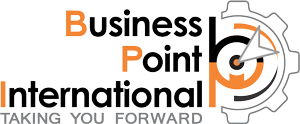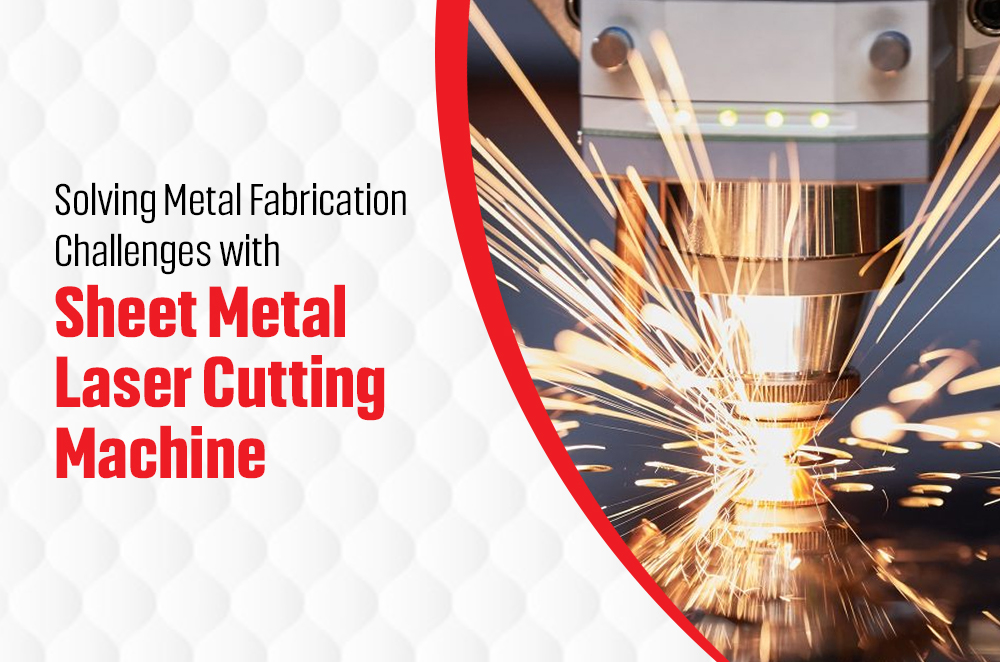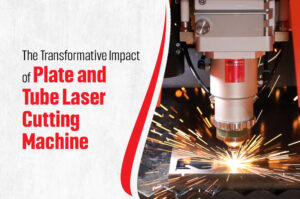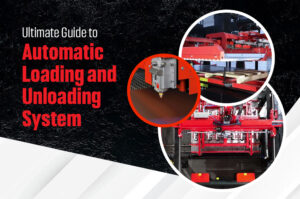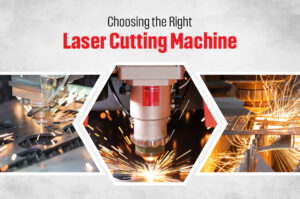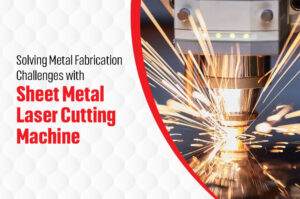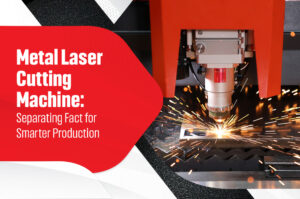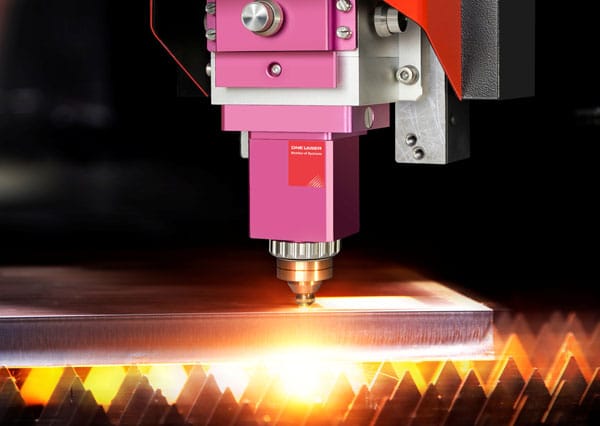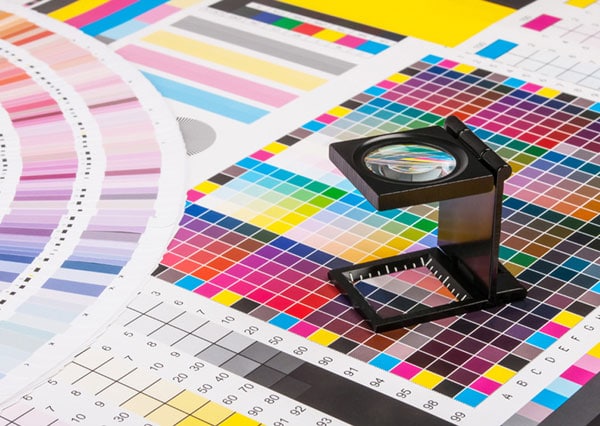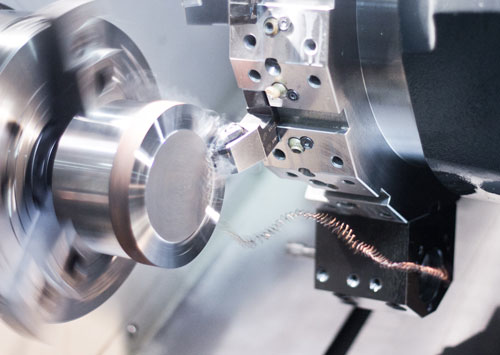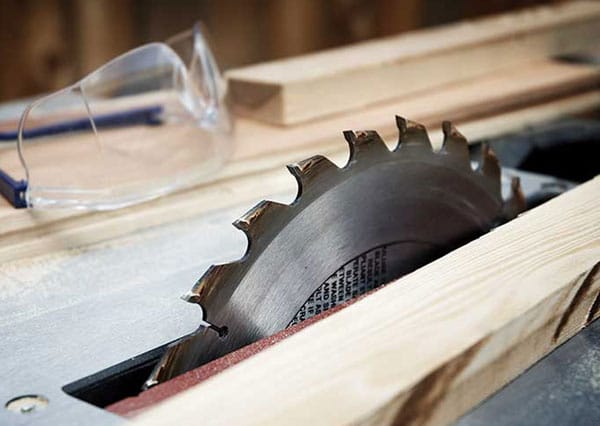In the fast moving world of metal fabrication, manufacturers face a silent struggle. Balancing precision, speed, and cost. Every millimeter counts, and a slight error in cutting can lead to massive material waste, production delays, and financial losses. For decades, traditional cutting methods like mechanical shearing and plasma cutting have dominated workshops, but they come with limitations. These older methods often produce rough edges, require excessive rework, and struggle with complex geometries.
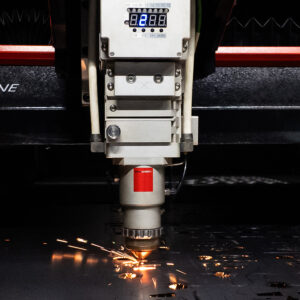 This is where sheet metal laser cutting machine step in, reshaping the industry. These machines don’t just cut metal, they redefine how metal is processed. With pinpoint accuracy, minimal waste, and high speed automation, they have become the backbone of modern fabrication. But how exactly do they solve the challenges that have plagued manufacturers for years? Through this detailed analysis, we’ll dissect the core problems in metal fabrication, explore the role of sheet metal laser cutting machine, break down their types, analyze their costs, and compare their impact against traditional methods. If you’re in the manufacturing industry, this is your guide to making an informed investment in laser technology.
This is where sheet metal laser cutting machine step in, reshaping the industry. These machines don’t just cut metal, they redefine how metal is processed. With pinpoint accuracy, minimal waste, and high speed automation, they have become the backbone of modern fabrication. But how exactly do they solve the challenges that have plagued manufacturers for years? Through this detailed analysis, we’ll dissect the core problems in metal fabrication, explore the role of sheet metal laser cutting machine, break down their types, analyze their costs, and compare their impact against traditional methods. If you’re in the manufacturing industry, this is your guide to making an informed investment in laser technology.
Challenges in Metal Fabrication
Metal fabrication is a process that demands high precision, speed, and efficiency. However, manufacturers often encounter obstacles that impact production quality and costs. Traditional cutting methods, while widely used, come with limitations that affect overall performance.
Precision is a major concern. Older cutting methods struggle to maintain accuracy, leading to rough edges and uneven cuts. This results in additional rework, increasing labor time and expenses. In industries where precision is non negotiable, even minor inconsistencies can cause major defects in the final product.
Material waste is another challenge. Traditional cutting methods often lead to excess scrap due to inefficient cutting paths and manual errors. Over time, this waste adds up, increasing production costs and reducing overall profitability.
Speed limitations slow down production. Mechanical cutting techniques require frequent adjustments and tool changes, delaying workflow. This inefficiency makes it difficult for manufacturers to meet tight deadlines and handle large scale production demands.
Operating costs remain high. Conventional machines require frequent maintenance, skilled labor, and consumables like blades or cutting gases. These ongoing expenses drive up production costs and reduce overall efficiency..
These challenges create roadblocks for manufacturers looking to optimize their processes. The adoption of sheet metal laser cutting machine provides a solution that overcomes these issues, offering unmatched precision, minimal waste, and high speed operation.
How Sheet Metal Laser Cutting Machine Solve These Challenges
Manufacturers facing precision issues, material waste, and slow production speeds are turning to sheet metal laser cutting machine as a solution. These machines have transformed metal fabrication by offering high accuracy, efficiency, and automation. Here’s how they address the most common challenges in the industry.
Precision is no longer a concern. Laser cutting technology uses a concentrated beam to cut through metal with extreme accuracy. Unlike traditional methods, which rely on mechanical force, laser cutting eliminates rough edges and ensures clean, precise cuts. This level of accuracy reduces rework and improves the quality of finished products.
Material waste is significantly reduced. Laser cutting software optimizes cutting paths, ensuring that maximum material is utilized with minimal scrap. Unlike older methods that produce excessive offcuts, laser machines use advanced nesting techniques to arrange parts efficiently on a sheet. This directly lowers production costs by reducing wasted raw materials.
Production speed increases without compromising quality. Laser cutters operate at high speeds, reducing the time required for each job. With automated settings and pre-programmed designs, operators can process multiple sheets quickly, keeping up with high demand manufacturing needs. Unlike traditional cutting methods that require manual adjustments, laser machines streamline production for faster turnaround times.
Lower maintenance and operational costs. Traditional cutting tools wear down over time, requiring frequent replacements. Laser machines, particularly fiber laser models, have fewer moving parts and require minimal maintenance. They also eliminate the need for expensive consumables like cutting fluids and mechanical blades, reducing long term expenses.
With these advantages, sheet metal laser cutting machine have become essential for modern metal fabrication. Their ability to improve precision, minimize waste, and accelerate production makes them a game changer for industries relying on efficient and cost effective manufacturing.
Types of Sheet Metal Laser Cutting Machine
Different manufacturing needs require different laser cutting technologies. Sheet metal laser cutting machine come in various types, each designed for specific applications, materials, and production scales. Understanding the differences helps manufacturers choose the right machine for their needs.
CO2 Laser Cutting Machines
CO2 laser cutting machines use a gas mixture primarily carbon dioxide to generate a laser beam. These machines are effective for cutting non metal materials like plastics and wood but are also used for metal cutting with oxygen assistance. However, they have higher maintenance requirements and slower processing speeds compared to fiber laser machines.
Key Benefits:
Suitable for cutting thicker mild steel
Smooth cutting edges with minimal burrs
Versatile for both metal and non-metal applications
Fiber Laser Cutting Machines
Fiber laser cutting machine technology has revolutionized metal fabrication. These machines use fiber optic cables to deliver a high intensity laser beam, providing superior cutting speed and precision. They excel at cutting reflective metals like stainless steel, aluminum, and copper, making them the preferred choice for industrial applications. Fiber lasers also consume less energy and require minimal maintenance, making them cost effective in the long run.
Key Benefits:
High energy efficiency
Faster cutting speed for thin and medium thickness metals
Lower maintenance compared to CO2 lasers
Longer lifespan of laser source
Hybrid Laser Cutting Machines
Hybrid machines combine features of CO2 and fiber lasers to offer versatility in metal cutting. These machines allow manufacturers to process a wide range of materials without switching between different laser sources. However, they are less common and usually used for specialized applications.
Key Benefits:
Ability to cut a wider range of materials
Versatile for mixed material fabrication industries
Flatbed Laser Cutting Machines
Flatbed laser cutting machines are designed for large sheet metal processing. They feature a stationary cutting surface where metal sheets are laid flat while the laser head moves across the material. These machines are ideal for industries that require high volume production with precise detailing.
Tube and Pipe Laser Cutting Machines
Unlike flatbed machines, tube and pipe laser cutting machines are engineered to process cylindrical and hollow metal sections. They are commonly used in automotive, aerospace, and construction industries, where complex tube cutting is required.
CNC Laser Cutting Machines
CNC laser cutting machines integrate automation and software control for precision cutting. These systems are ideal for mass production and industries requiring consistent quality in every cut.
Key Benefits:
High precision and repeatability
Automated operation reduces human error
Compatible with CAD/CAM software for advanced cutting designs
Open vs. Enclosed Laser Cutting Machines
Open-Type Machines: Ideal for workshops requiring easy material handling and faster production cycles. Best for large sheet metal cutting where safety enclosures are not a priority.
Closed Type Machines: Equipped with safety enclosures and fume extraction systems, making them suitable for industrial environments prioritizing safety and clean air.
Choosing the Right Machine for Your Needs
Selecting the right sheet metal laser cutting machine depends on factors like
The type and thickness of the metal.
Production volume and speed requirements.
Energy efficiency and operating costs.
Budget and future scalability.
Each of these machine types plays a crucial role in modern metal fabrication.
Cost of Sheet Metal Laser Cutting Machine and Their Impact on Manufacturing
Investing in a sheet metal laser cutting machine requires careful financial planning. While these machines have a higher upfront cost than traditional cutting methods, their long term benefits in precision, efficiency, and reduced waste make them a cost effective solution.
Installation and setup – Depends on manufacturer and technical requirements
Maintenance and servicing – Fiber lasers typically have lower maintenance costs than CO2 lasers
Operational expenses – Includes power consumption, labor, and machine consumables
Sheet Metal Laser Cutting Machine and Its Impact on Manufacturing
Investing in a sheet metal laser cutting machine requires careful consideration of the cost and its long term benefits. The price of these machines varies depending on the type, power, and additional features. In the UAE market, pricing can fluctuate based on specifications and manufacturer support.
How Laser Cutting Costs Compare to Traditional Cutting Methods
Before laser cutting technology, industries relied on methods such as mechanical shearing, plasma cutting, and punching, which had limitations in precision, speed, and waste management. Let’s examine how modern sheet metal laser cutting machine have transformed manufacturing:
Lower Production Costs
Traditional methods required multiple steps (cutting, grinding, deburring), whereas laser cutting completes tasks in one process. Reduced material waste due to optimized cutting paths, saving on raw materials.
Faster Production Cycles
Mechanical cutting methods often require manual adjustments, increasing downtime. Laser cutting machines operate with automated CNC systems, reducing processing time by up to 50 percent.
Improved Precision and Reduced Material Waste
Conventional cutting methods often lead to burrs and rough edges, requiring post processing. Laser cutting provides cleaner edges, eliminating secondary finishing costs.
Reduced Labor Costs
Older methods relied on manual operations, increasing labor expenses. Modern laser cutting machines support automated material loading and unloading, minimizing workforce dependency.
Is Investing in a Laser Cutter Worth It?
While the initial cost of a sheet metal laser cutting machine may seem high, businesses benefit from:
Higher accuracy and repeatability in mass production.
Reduced energy consumption compared to plasma cutting.
Less material wastage, leading to cost savings on raw materials.
Scalability, allowing businesses to handle diverse projects efficiently.
Many UAE manufacturers have shifted from traditional metal cutting techniques to laser cutting, enhancing their productivity and competitiveness.
Zawya Press Release About SteelFab 2023 Exhibition For Metalworks Industry
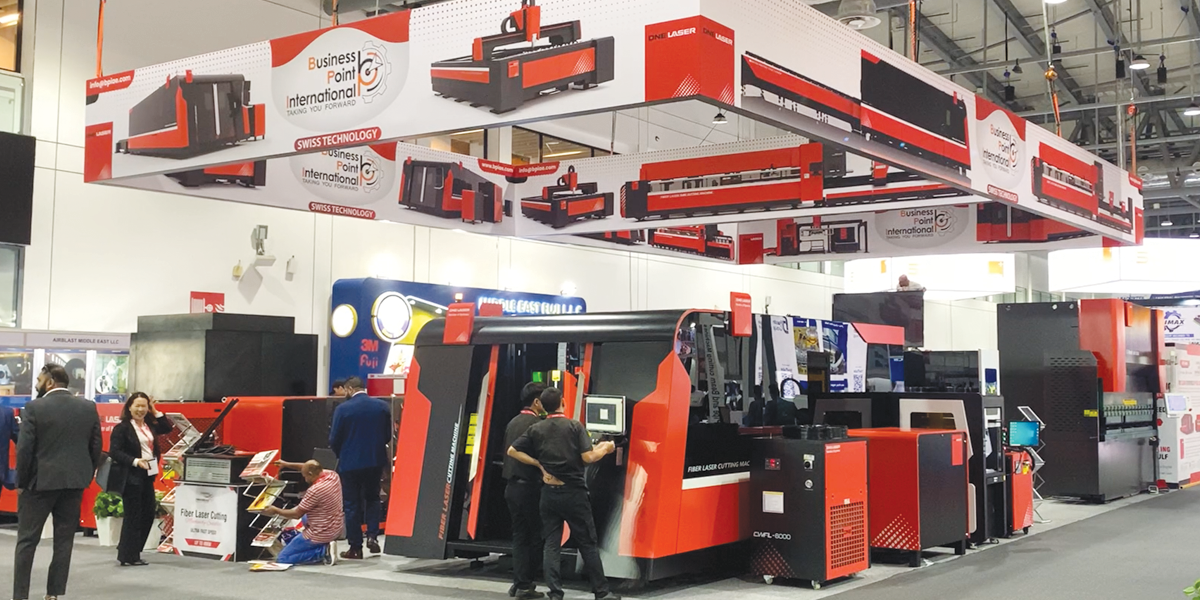
The 18th edition of Steel Fab 2023 successfully wrapped up at Expo Centre Sharjah (ECS), a premier regional event for metalworks and steel fabrication. The exhibition showcased advanced machinery and technologies from around the world, highlighting its growing significance in the metal fabrication industry. As a key platform for innovation and business, Steel Fab attracted global suppliers and professionals.
SteelFab Event Highlights (2019 – 2025)
SteelFab 2019 – Exhibited our metal fabrication machines and high-speed fiber laser cutting machine. Watch the highlights: [https://youtu.be/QWVEXlSJVCc]
SteelFab 2020 – Showcasing advanced fiber laser cutting machine. Check it out: [https://youtu.be/RFrPcK-oNYo]
SteelFab 2022 – A stage for revolutionary metal processing machines and modernized fiber laser cutting machine. Watch here: [https://youtu.be/Uc8AufxYbGI]
SteelFab 2024 – Bringing together metal fabrication industry leaders and technology pioneers. Experience it here: [https://youtu.be/OM5jt_iJzfQ]
SteelFab 2025 – The future of fiber laser cutting machine and metal fabrication unfolds. See the event highlights: [https://youtu.be/JI1rplS7uDI]
Conclusion
Metal fabrication has come a long way, but are you still relying on outdated methods?
Sheet metal laser cutting machine have changed the game, offering unmatched precision, speed, and cost savings. Unlike traditional cutting techniques that waste time and materials, laser cutting ensures clean, efficient, and automated production. If you’re looking to stay ahead in the competitive UAE market, investing in the right laser cutting machine can make all the difference. At Business Point International, we provide best in standard flatbed and tube laser cutting machines designed for high performance and reliability. Ready to upgrade your manufacturing process? Contact Business Point International today and let us help you find the perfect sheet metal laser cutting solution for your business.
